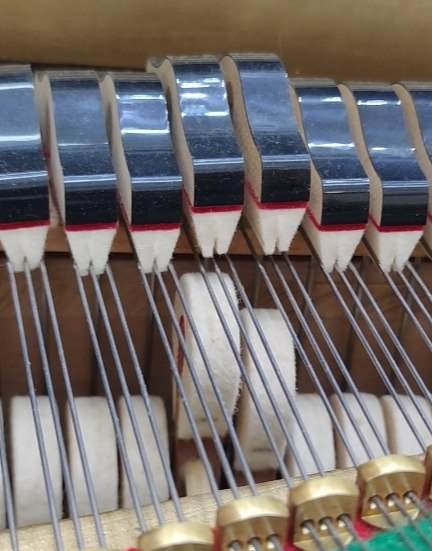Hello guys, here is an issue that bothers me for long: I found out some hammers of my grand piano are not in the right position after hitting the string even pressing the key with the nearly same speed/strength.
They will only get to the right position when pressing the key with much faster speed/heavier strength.
See below picture, the left hammer is the one with problem while the right one is OK.
The problematic hammer is much closer to the string than the right one after hitting the strings. And it needs much heavier strength before it can be to the right position.
Any idea how can I adjust it please? Thanks.

updated the video as below:
1) when using sofer velocity, the problematic hammer cannot return to the right position as its neighbor key after striking strings. It is much closer to strings(see the first half part of the video)
2) only using heavy velocity, the problematic hammer can go back to the right position.
[
repetition spring performance
[